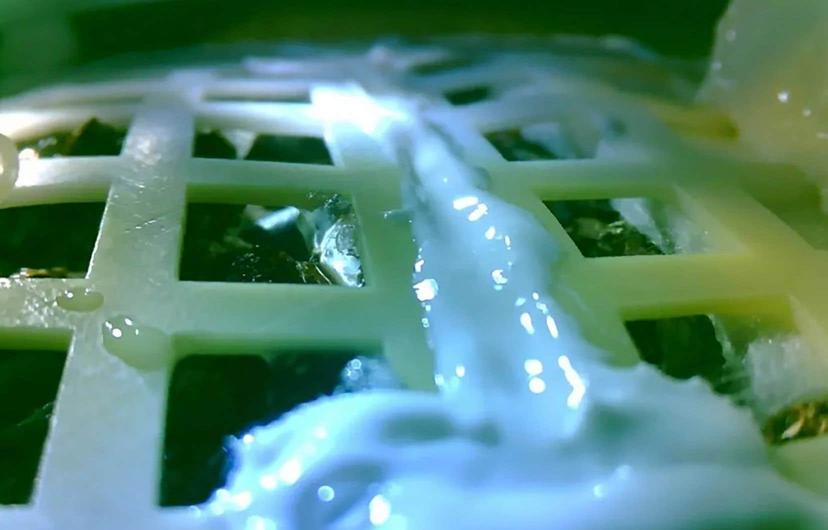
A cottonseed germinated on the moon
► What happened in the mini-garden center carried away by the Chinese probe?
During the landing of the Chang'e-4 probe on the far side of the lunar star on January 3, researchers from the Research Institute of Advanced Technology at Chongqing University (southwest of China) landed with a bucket-shaped container, weighing 3 kg and measuring 18 cm. Inside, earth, water, Earth's atmosphere – with 78% nitrogen, 21% oxygen and 0.04% carbon dioxide – and artificial light mimicking the solar spectrum .
In the ground or on the surface were placed seeds of cotton, potato, rapeseed and lady's cress (Arabidopsis, the model plant of geneticists), as well as eggs of fruit flies (drosophila, the model insect for biologists) and yeasts, molds similar to those used to make bread or beer.
Eventually, the Chinese probably have the idea of recycling human waste (feces and urine) and mixing it with soil to make a compost on which astronauts could grow food plants. Already anticipating, the New China agency goes so far as to say that the future inhabitants of the Moon will be able to cultivate plants to make clothes...
On Tuesday, January 15, the Chinese space agency CNSA (China National Space Administration) released a photo of a white and green sprout of cotton, emerging from a bluish trellis structure. "This is the first time that humans have performed biological growth experiments on the lunar surface," said Professor Xie Gengxin of Chongqing University, who designed the novel experiment.
Today I learned how to build a storage container for art supplies that are currently in storage, ebonize wood, use… https://t.co/xKNNrtll82
— Amanda Meyer Mon Nov 16 07:02:10 +0000 2020
► What lessons can we draw from this?

"The Chinese idea is to reconstruct a small terrestrial ecosystem in space," says Michel Viso, veterinarian, head of exobiology at Cnes. How does this "micro-Earth" on the Moon work? When the eggs have hatched, the flies will produce carbon dioxide, which green plants will happily consume thanks to their chlorophyll and photosynthesis. They will produce sugars (carbohydrates) which will be the material for the first leaves, and their stems will grow in length and thickness. All while releasing oxygen which will be welcome for the flies. On the other hand, yeasts, which are single-celled, non-photosynthetic fungi, live their lives by also releasing carbon dioxide into the air.
“For the moment, this experiment shows that germination can start in an environment richer in cosmic radiation – a priori deleterious for cell DNA – than in a manned space station in low orbit such as the International Space Station (ISS) , as well as in the presence of microgravity – equal to only one tenth of the Earth's gravity – which notably has the effect of facilitating the management of fluids and the circulation of water”, observes the French researcher.
The Chinese have only communicated, so far, by sending a photo, but it is to be hoped that they have also equipped their ecosystem with more precise measuring instruments such as thermometers, pH meters to quantify acidity or oximeters to measure atmospheric oxygen.
► What do we already know about the living being sent into space?
Since the missions of the Mir stations and the ISS, we succeeded in reproducing, despite microgravity, barley seeds during the Russian experiment Svet (“light” in Russian). Similarly, on board the Shenzhou capsules, the Chinese have reproduced grains of rice and tomatoes. In the latter, the researchers found the existence of a large number of mutations, thus invalidating a belief that space could be beneficial to the reproduction of plants.
In animals, experiments took place with Claudie Haigneré in 1996 with the Mir station, as part of the Cassiopée mission. Researchers studied the influence of microgravity on egg development of a salamander-like amphibian called a pleurodelus. In particular, they noted that, despite alterations in the development of the egg during the different stages (from 1 cell to 64 cells), the embryos were similar to those obtained on Earth, as if the anomalies had been eliminated at the time. course of embryonic development.







